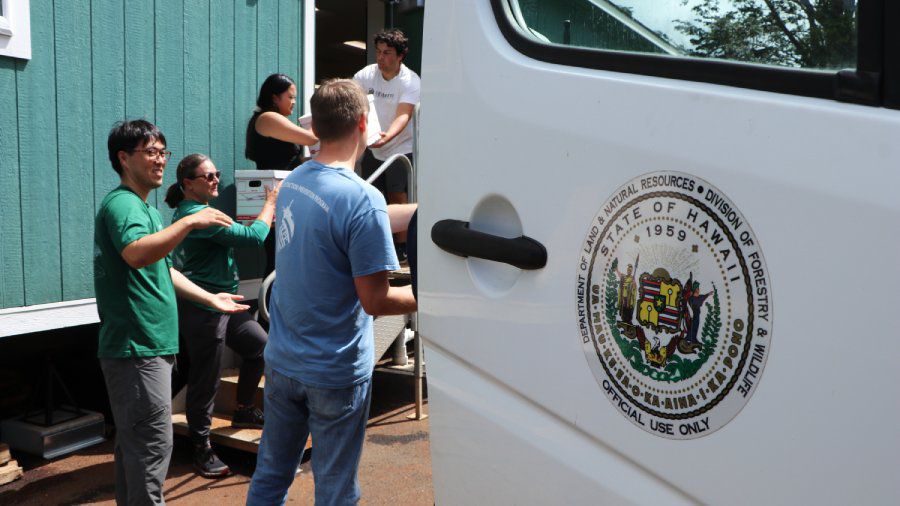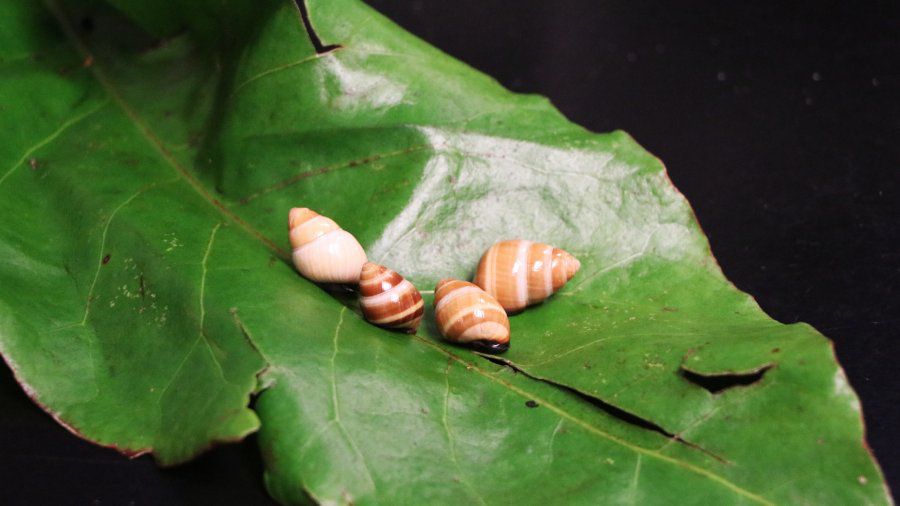HONOLULU — In this Year of the Kahuli, thousands of threatened and endangered native Hawaiian snails made the quickest trip of their lives from Kailua to a new lab in Pearl City last week. The new site now doubles the Snail Extinction Prevention Program’s ability to rear snails with two locations.
Dubbed “The Great Snail Bail,” the rare snails were transported in 10 vehicles and received VIP treatment; back-up vehicles and officers from the Department of Land and Natural Resources Division of Conservation and Resources Enforcement tagged along in case any problems were to arise along the delivery route on the H-3 Freeway.
Dr. David Sischo runs the state’s Snail Extinction Prevention Program. For the past seven years, he and his team have cared for 8,000 snails — representing 38 critically imperiled species from five islands, most of which are extinct in the wild — in a small trailer.
“We had the last individuals in the world of some of these species, all in boxes, traveling over the H-3,” said Sischo in a news release. “These snails may be small, but they are no less important than large charismatic endangered species like monk seals.”
Because having the extremely rare snail species all together at one time created a vulnerable situation, officials took every possible precaution to ensure safe and efficient transportation.
“While this was likely the largest and fastest snail migration ever, in all seriousness, these are precious public trust resources,” said Sischo. “Land snails are a critical component to native forest ecosystems. They glean algae, fungus and bacteria from leaf surfaces. They’re eating dead and decaying leaves, so they are really important for nutrient cycling in the forest ecosystem.

“In Hawaiian tradition, they represent voice. They are known as the ‘voice of the forest.’ They represent the ability to pass on your genealogy and your history through voice,” added Sischo.
Sischo also said these snails are not the snails in your backyard. Those are giant African snails or other introduced snails that eat your garden.
“Our native snails do not eat plants,” explained Sischo. “We have no single (native) snail that eats living plants. They are beneficial for the forest. They’re beautiful, diverse, and don’t exist anywhere else in the world.”
Once at the new location, a human chain moved all 170 boxes of snails into their new home to make the move complete. Sischo explained the Pearl City location has double the space with upgrades to accommodate more species.
He also said the lab holds about 100 species that will become extinct across the state within the next decade without assistance, such as captive rearing. “It’s unfortunate, but we have to do it. We have to bring them in and they’re going to have to pass through our lab to get them back up and back out into the wild. They are important for our islands, they’re true treasures,” said Sischo.
Sarah Yamanaka covers events, environmental and community news for Spectrum News Hawaii. She can be reached at sarah.yamanaka@charter.com.





